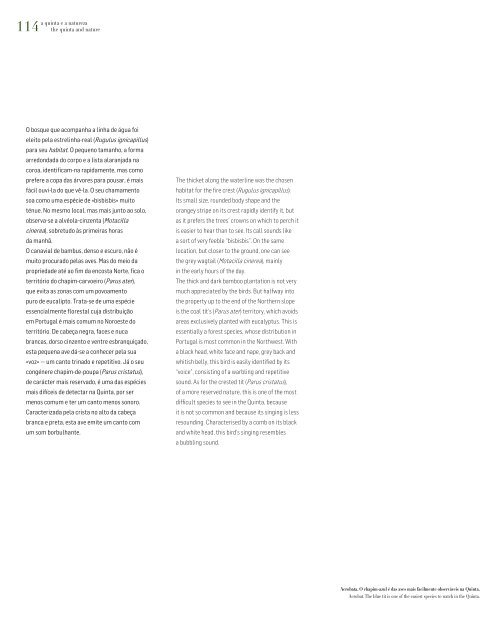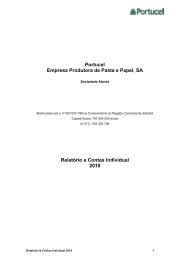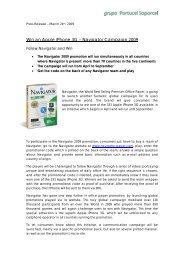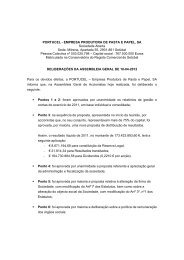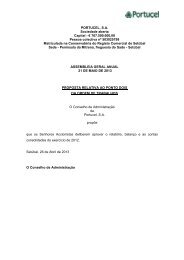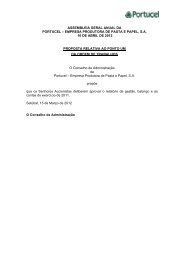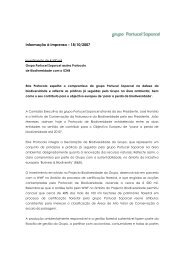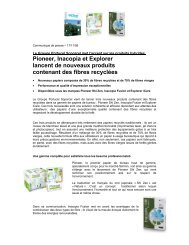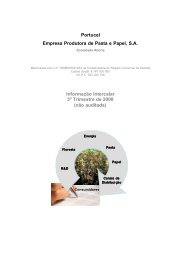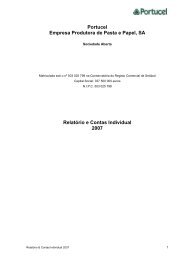Os Eucaliptos e as Aves da Quinta de São Francisco
Os Eucaliptos e as Aves da Quinta de São Francisco
Os Eucaliptos e as Aves da Quinta de São Francisco
Create successful ePaper yourself
Turn your PDF publications into a flip-book with our unique Google optimized e-Paper software.
a quinta e a natureza<br />
114 the quinta and nature<br />
O bosque que acompanha a linha <strong>de</strong> água foi<br />
eleito pela estrelinha-real (Rugulus ignicapillus)<br />
para seu habitat. O pequeno tamanho, a forma<br />
arredon<strong>da</strong><strong>da</strong> do corpo e a lista alaranja<strong>da</strong> na<br />
coroa, i<strong>de</strong>ntificam-na rapi<strong>da</strong>mente, m<strong>as</strong> como<br />
prefere a copa d<strong>as</strong> árvores para pousar, é mais<br />
fácil ouvi-la do que vê-la. O seu chamamento<br />
soa como uma espécie <strong>de</strong> «bisbisbis» muito<br />
ténue. No mesmo local, m<strong>as</strong> mais junto ao solo,<br />
observa-se a alvéola-cinzenta (Motacilla<br />
cinerea), sobretudo às primeir<strong>as</strong> hor<strong>as</strong><br />
<strong>da</strong> manhã.<br />
O canavial <strong>de</strong> bambus, <strong>de</strong>nso e escuro, não é<br />
muito procurado pel<strong>as</strong> aves. M<strong>as</strong> do meio <strong>da</strong><br />
proprie<strong>da</strong><strong>de</strong> até ao fim <strong>da</strong> encosta Norte, fica o<br />
território do chapim-carvoeiro (Parus ater),<br />
que evita <strong>as</strong> zon<strong>as</strong> com um povoamento<br />
puro <strong>de</strong> eucalipto. Trata-se <strong>de</strong> uma espécie<br />
essencialmente florestal cuja distribuição<br />
em Portugal é mais comum no Noroeste do<br />
território. De cabeça negra, faces e nuca<br />
branc<strong>as</strong>, dorso cinzento e ventre esbranquiçado,<br />
esta pequena ave dá-se a conhecer pela sua<br />
«voz» — um canto trinado e repetitivo. Já o seu<br />
congénere chapim-<strong>de</strong>-poupa (Parus cristatus),<br />
<strong>de</strong> carácter mais reservado, é uma d<strong>as</strong> espécies<br />
mais difíceis <strong>de</strong> <strong>de</strong>tectar na <strong>Quinta</strong>, por ser<br />
menos comum e ter um canto menos sonoro.<br />
Caracteriza<strong>da</strong> pela crista no alto <strong>da</strong> cabeça<br />
branca e preta, esta ave emite um canto com<br />
um som borbulhante.<br />
The thicket along the waterline w<strong>as</strong> the chosen<br />
habitat for the fire crest (Rugulus ignicapillus).<br />
Its small size, roun<strong>de</strong>d body shape and the<br />
orangey stripe on its crest rapidly i<strong>de</strong>ntify it, but<br />
<strong>as</strong> it prefers the trees’ crowns on which to perch it<br />
is e<strong>as</strong>ier to hear than to see. Its call sounds like<br />
a sort of very feeble “bisbisbis”. On the same<br />
location, but closer to the ground, one can see<br />
the grey wagtail (Motacilla cinerea), mainly<br />
in the early hours of the <strong>da</strong>y.<br />
The thick and <strong>da</strong>rk bamboo plantation is not very<br />
much appreciated by the birds. But halfway into<br />
the property up to the end of the Northern slope<br />
is the coal tit’s (Parus ater) territory, which avoids<br />
are<strong>as</strong> exclusively planted with eucalyptus. This is<br />
essentially a forest species, whose distribution in<br />
Portugal is most common in the Northwest. With<br />
a black head, white face and nape, grey back and<br />
whitish belly, this bird is e<strong>as</strong>ily i<strong>de</strong>ntified by its<br />
“voice”, consisting of a warbling and repetitive<br />
sound. As for the crested tit (Parus cristatus),<br />
of a more reserved nature, this is one of the most<br />
difficult species to see in the <strong>Quinta</strong>, because<br />
it is not so common and because its singing is less<br />
resounding. Characterised by a comb on its black<br />
and white head, this bird’s singing resembles<br />
a bubbling sound.<br />
Acrobata. O chapim-azul é d<strong>as</strong> aves mais facilmente observáveis na <strong>Quinta</strong>.<br />
Acrobat. The blue tit is one of the e<strong>as</strong>iest species to watch in the <strong>Quinta</strong>.


